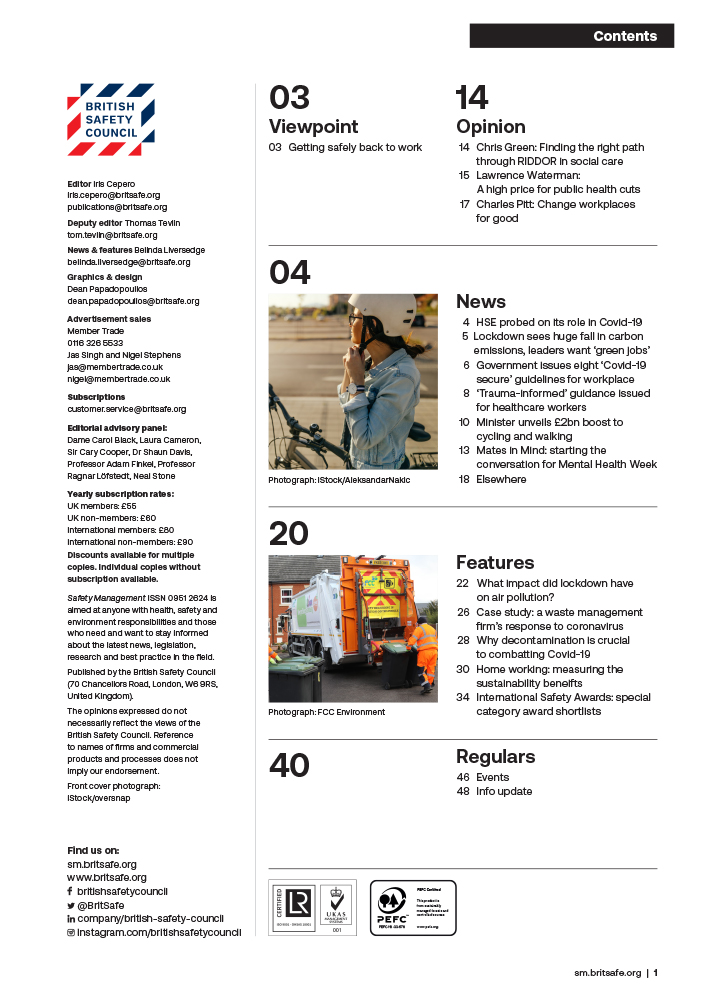Pollution of all forms caused over 2.3 million premature deaths in India in 2019, the highest in the world, according to a new study published in The Lancet Planetary Health journal.
News
Pollution causes 2.3 million premature deaths in India, warns report
Of the 2.3 million people who died prematurely due to pollution in India in 2019, 73 per cent (1.67 million) of the deaths were due to air pollution, again the largest number of air pollution deaths in the world, the report found. The majority of the 1.67 million deaths – 0∙98 million – were caused by exposure to ambient particulate matter (PM2.5) pollution, while household air pollution was responsible for 0.61 million of the total number of deaths.
 Photograph: iStock, credit Bdphoto
Photograph: iStock, credit Bdphoto
Globally, pollution of all forms – including ambient and household air pollution, toxic chemical pollution and water pollution – continues to be largest environmental risk factor for disease and premature death, says the report. In 2019, pollution of all types was responsible for approximately nine million premature deaths globally, or one in six deaths, a figure unchanged since 2015. Air pollution (both household and ambient air pollution) accounted for 6·7 million of the deaths, water pollution 1·4 million deaths and lead 900,000 deaths.
The report says India has the world’s highest ambient PM2.5 levels (on a population-weighted average), closely followed by Nepal. Air pollution is most severe in the Indo-Gangetic Plain in northern India, which contains New Delhi and many of the most polluted cities.
Economic losses in India due to traditional forms of pollution – such as household air pollution, unsafe drinking water and inadequate sanitation – “fell substantially” from 3.2 per cent of GDP in 2000 to approximately 1.0 per cent of GDP in 2019, as the death rate from traditional types of pollution halved over the same period.
However, the report warns that between 2000 and 2019, economic losses in India due to modern forms of pollution – namely ambient air pollution, lead pollution and chemical pollution – have increased and are now “conservatively estimated to amount to approximately 1·0% of GDP”.
The researchers say this reflects the fact that, although the number of global deaths attributable to types of pollution associated with extreme poverty, like household and water pollution, has fallen since 2000, global deaths from modern pollution risk factors, like ambient air pollution and chemical pollution, have risen by 66 per cent, as a consequence of factors like industrialisation, urbanisation, fossil fuel combustion “and an absence of adequate national or international chemical policy”.
Air pollution in India is above WHO guidelines
The report says India has made efforts to control air pollution, including the Pradhan Mantri Ujjwala Yojana (PMUY) programme. This aims to reduce household air pollution by providing liquefied petroleum gas (LPG) to rural households for clean cooking fuel, replacing the burning of solid fuels like coal and wood that create harmful PM2.5 ambient and household air pollution.
However, the report warns: “India has developed instruments and regulatory powers to mitigate [air] pollution sources but there is no centralised system to drive pollution control efforts and achieve substantial improvements.
“Across more than 90 per cent of the country ambient air pollution levels remain well above the WHO (World Health Organization) guideline for PM2.5 pollution of 10 µg/m3.”
Commenting on the global action needed to reduce all forms of pollution, the authors say: “Urgent attention is needed to control pollution and prevent pollution-related disease, with an emphasis on air pollution and lead poisoning, and a stronger focus on hazardous chemical pollution. Pollution, climate change and biodiversity loss are closely linked.
“Successful control of these conjoined threats requires a globally supported, formal science-policy interface to inform intervention, influence research and guide funding.”
Diwali and air pollution
Meanwhile, a new report has found that emissions from biomass burning, rather than fireworks, drive Delhi’s poor air quality in the days after Diwali. The study - Chemical Speciation and Source Apportionment of Ambient PM2.5 in New Delhi Before, During and After the Diwali Fireworks - was led by scientists from the Indian Institute of Technology Delhi (IIT-Delhi) and published in the Atmospheric Pollution Research journal.
The study was partly funded by the Union Ministry of Education and IIT-Delhi and conducted as part of a collaboration with IIT-Kanpur, and PRL-Ahmedabad.
According to an IIT-Delhi statement, researchers found that the metal content in PM2.5 levels rose 1,100 per cent during Diwali and that fireworks accounted for 95 per cent of the metal. However, the impact of fireworks fell in 12 hours.
“The researchers have found that biomass burning-related emissions rise steeply in the days following Diwali, with average levels almost rising by order of around two compared to the pre-Diwali concentration,” the institute said in a statement.
Delhi was ranked the most polluted capital for the fourth consecutive year last year, according to the World Air Quality Report 2021. Delhi witnessed a 14.6 per cent increase in PM2.5 concentrations from 2020, the report said.
The pollution in Delhi was so severe that the Supreme Court suggested imposing a lockdown to combat the toxic air and improve health conditions. Following the top court’s observations, the Delhi government announced the immediate closure of schools and offices with government officials working from home for a brief period. Trucks carrying non-essential items were barred from entering the city and construction activities were banned.
Read the Lancet Commission report, Pollution and health: a progress update.


NEWS

Karnataka passes law granting employment and social security rights to app-based gig workers
By Orchie Bandyopadhyay on 11 June 2025
App-based gig workers in Karnataka state will shortly gain new employment rights and access to certain social security benefits after the state governor formally gave assent to an ordinance, or law, aimed at ensuring the welfare of platform-based workers.

